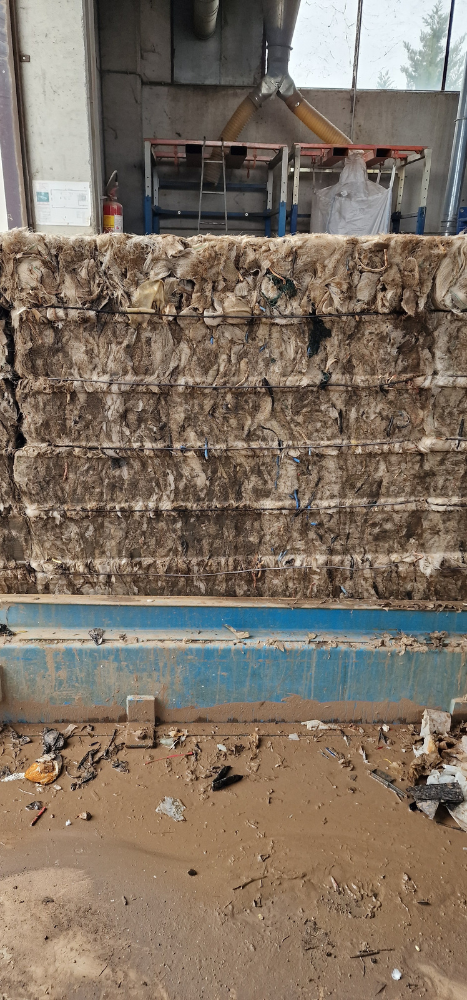The impact of plastic material types and advancements in synthetic fibre recycling
This article was originally written in Italian by our distributor Tana Italia, following textile shredding trials. It has been translated into English and expanded with insights from Tana. You can read the original article here tanaitalia.com.
Plastic materials are highly varied, encompassing types such as PET/PETE, PE, PVC, and PP, each with its own subcategories and industrial applications. These plastics are prevalent across sectors including construction, healthcare, packaging, and insulation. Among the most complex challenges in circular material flows are synthetic fibres derived from textile waste.
Textile materials often consist of a combination of fibre types, requiring specialized expertise and equipment to process effectively. One of the key operational challenges begins at the primary shredding stage, where materials frequently tangle and accumulate on the rotor, disrupting performance.
Mechanical challenges in textile shredding
The shredding of synthetic fibres presents notable mechanical difficulties. These materials tend to wrap around moving parts, causing system slowdowns or complete stoppages. In some instances, they may overheat and become compressed, compounding the issue and requiring extensive intervention to resume operations.
Customer feedback has highlighted that TANA shredders provide substantial advantages in textile processing. The design prevents material buildup in the shredding chamber and supports consistent throughput. In addition, the ground-level inspection door enables the swift removal of non-shreddable items, streamlining maintenance and minimizing downtime.
“Processing textile waste poses a mechanical challenge due to the material’s tendency to wrap and compact, which demands high torque to maintain efficient throughput. The TANA Shark is equipped to meet this requirement, delivering robust power for even the most demanding fibre types. At the same time, controlling particle size is essential for downstream processes, and this is where our adjustable screening system plays a key role. By combining force and precision, we ensure both operational stability and a consistent, homogenous output.” -Corbinian Gattermann, Key Account & Application Manager, Tana Oy
TANA’s integrated approach enhances both operational reliability and sustainability in textile recycling – supporting broader circular economy objectives through the more effective processing of synthetic fibre waste.
